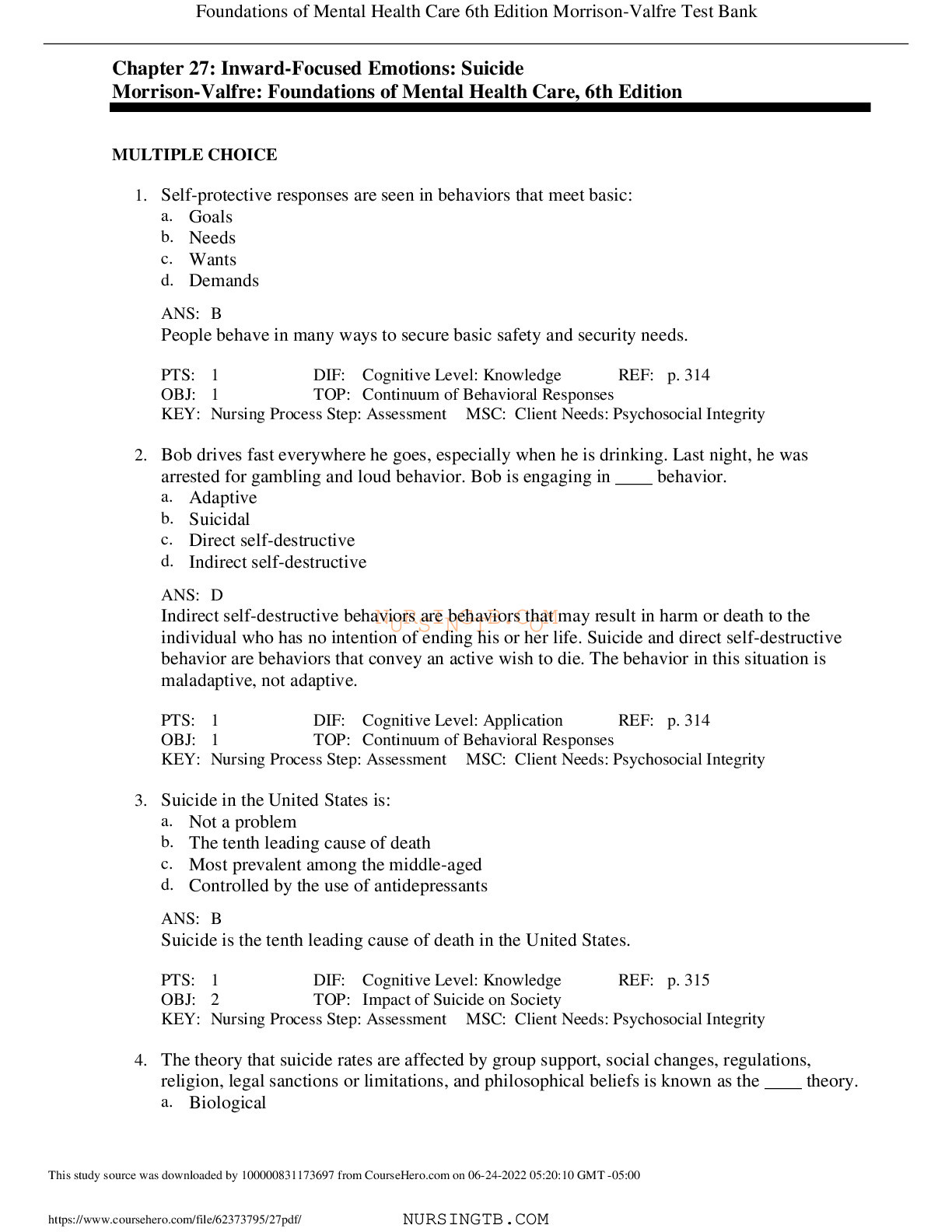1. Self-protective responses are seen in behaviors that meet basic:
a. Goals
b. Needs
c. Wants
d. Demands
2. Bob drives fast everywhere he goes, especially when he is drinking. Last night, he was
arrested for gambling and loud behavior. Bob is engaging in ____ behavior.
a. Adaptive
b. Suicidal
c. Direct self-destructive
d. Indirect self-destructive
3. Suicide in the United State
...[Show More]
1. Self-protective responses are seen in behaviors that meet basic:
a. Goals
b. Needs
c. Wants
d. Demands
2. Bob drives fast everywhere he goes, especially when he is drinking. Last night, he was
arrested for gambling and loud behavior. Bob is engaging in ____ behavior.
a. Adaptive
b. Suicidal
c. Direct self-destructive
d. Indirect self-destructive
3. Suicide in the United States is:
a. Not a problem
b. The tenth leading cause of death
c. Most prevalent among the middle-aged
d. Controlled by the use of antidepressants
4. The theory that suicide rates are affected by group support, social changes, regulations,
religion, legal sanctions or limitations, and philosophical beliefs is known as the ____ theory.
a. Biological
5. Children are at greater risk for committing suicide if they have ____ problems.
a. Family
b. Social
c. Mental health
d. Acute physical
6. Suicide is attempted three times more frequently by ____ but is more often successfully
completed by ____.
a. Adult men, women
b. Adult women, men
c. Adult fathers, mothers
d. Adolescent mothers, fathers
7. The caregiver works with suicidal clients to establish therapeutic rapport. The focused
communications and concerned actions encourage suicidal persons to:
a. Feel in control
b. Feel self-worth
c. Talk about themselves
d. Feel foolish for thinking about suicide
[Show Less]
